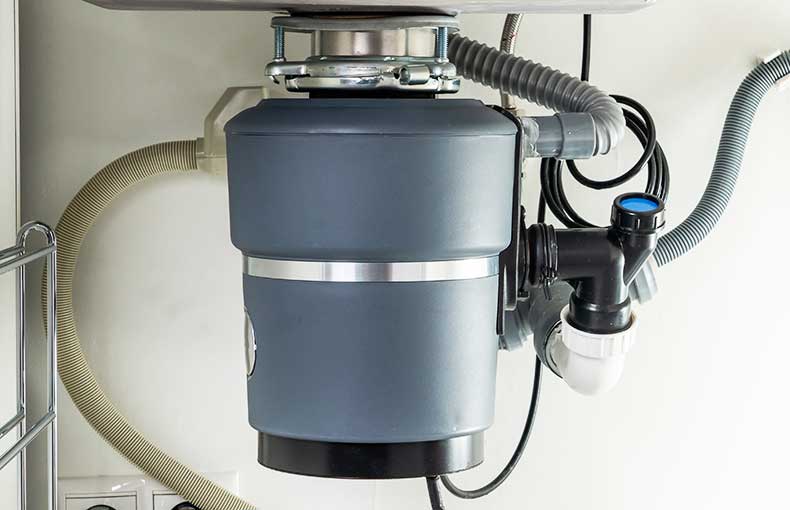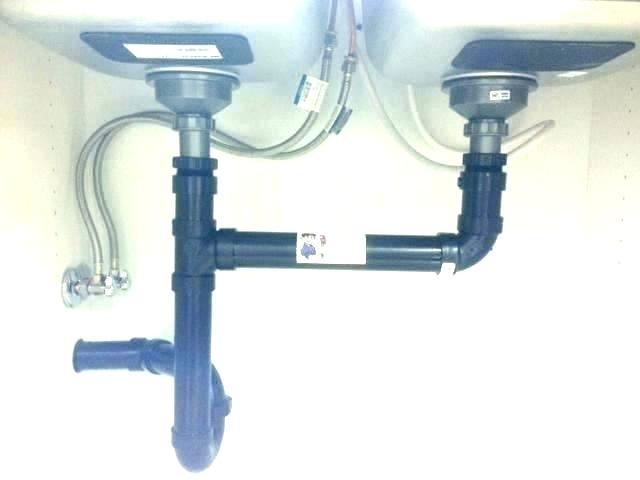We've stumbled upon this post relating to How to fix a pretty consistent leak from my garbage disposal down the page on the internet and felt it made good sense to discuss it with you on my blog.

Waste disposal unit are essential kitchen area devices that aid in dealing with food waste efficiently. However, a dripping waste disposal unit can be an aggravating and messy trouble to deal with. Fortunately, lots of leaks can be fixed quickly with a few basic steps. In this short article, we will certainly talk about exactly how to repair a leaking waste disposal unit successfully.
Intro
Garbage disposals are mounted under kitchen sinks and are created to shred food waste right into smaller sized pieces, enabling it to travel through the plumbing system easily. While these gadgets are usually dependable, leaks can occur in time because of deterioration, loosened links, or damages to the system.
Step-by-Step Overview to Taking Care Of a Dripping Waste Disposal Unit
Turn Off the Power
Before attempting any fixings, guarantee that the power to the garbage disposal system is turned off to prevent the threat of electric shock.
Locate the Leakage
Determine the precise area of the leak and figure out the cause
Tighten Connections
Make use of a wrench to tighten any type of loose links in between the disposal device and the plumbing system.
Replace Seals or Gaskets
If the leakage is because of used seals or gaskets, remove the old components and change them with new ones.
Patching Fractures or Holes
For cracks or openings in the disposal system, usage epoxy or a suitable patching product to seal the broken area.
Recognizing the Source of the Leakage
Before trying to fix a leaking garbage disposal, it is important to determine the resource of the leak. This can normally be done via aesthetic inspection or by performing simple examinations.
Visual Evaluation
Examine the waste disposal unit system thoroughly for any indications of water leak. Pay very close attention to locations around seals, gaskets, and connection points.
Checking for Leakages
One means to examine for leaks is by running water with the disposal device and checking for any type of noticeable indicators of leakage.
Typical Root Causes Of Leakages in Garbage Disposals
Worn Seals and Gaskets
Seals and gaskets play a crucial duty in protecting against water from dripping out of the garbage disposal. In time, these components can degrade, resulting in leakages around the disposal unit.
Loose Connections
The connections in between the waste disposal unit and the pipes system can become loosened in time, causing water to leakage out throughout operation.
Splits or Holes in the Disposal System
Physical damage to the garbage disposal, such as splits or holes in the housing, can additionally result in leakages.
Tools and Products Needed for Taking Care Of a Leaking Waste Disposal Unit
Prior to beginning the fixing procedure, collect the essential devices and materials, consisting of a screwdriver, flexible wrench, plumber's putty, replacement seals or gaskets, and epoxy or patching material for repairing splits or holes.
Examining the Waste Disposal Unit After Repair
Once the fixing is complete, check the waste disposal unit by running water through it to make sure that the leak has actually been fixed.
Preventive Upkeep Tips to Stay Clear Of Future Leaks
To prevent future leaks, it is vital to do routine maintenance on your waste disposal unit. This includes maintaining it clean, avoiding putting non-food things or tough things down the disposal, and regularly checking for leakages or various other issues.
Conclusion
Finally, repairing a dripping garbage disposal is a reasonably simple procedure that can be completed with fundamental tools and materials. By following the actions detailed in this short article and practicing precautionary maintenance, you can maintain your waste disposal unit in good working condition and stay clear of pricey repair services in the future.
What to Do About a Leaking Garbage Disposal
A leaking garbage disposal often goes unnoticed until you confront a sopping cabinet, a foul-smelling puddle, or an audible drip-drip-drip from the unit. The fix can be frustrating, too, because the leak can stem from a number of components in the system. Fortunately, with a little sleuthing, you can zero in on the leak and—depending on the exact location—stop the icky oozing and repair the component that caused it. Worst case scenario, if it turns out that the garbage disposal must be replaced, installing a new one is a reasonable do-it-yourself task for those with basic plumbing skills. Read on to keep the cash you’d otherwise hand over to a pro.
Prepare to find the leak
Prior to testing the garbage disposal for leaks, unplug it at the wall outlet and turn off the power from the breaker box to prevent electrical shock. Then insert a watertight sink stopper into your sink drain and wipe the unit dry with a clean cloth. In any handy container, mix a few drops of food coloring into a few cups of water, and pour the dyed water onto the sink stopper to help you locate the leak.
Investigate the source
the top, where the disposal meets the sink drain the side, where the dishwasher hose or main drain pipe connects to the disposal or the bottom of the unit Inspect each of these locations while gliding a light-colored rag over the unit; the dyed water will readily show on the rag and reveal the location of the leak. If a leak isn’t immediately apparent, remove the sink stopper and pour a few more cups of dyed water down the sink drain, then check for leaks again. Leaks near the top of the unit are more likely to show themselves while the sink is plugged, while side and bottom leaks are more noticeable while the sink is unplugged.
The metal sink flange that sits directly inside the sink drain is typically sealed around the top with plumber’s putty (a clay-like sealant) and then secured from under the sink with bolts. If the plumber’s putty deteriorates, or the bolts loosen, the flange can no longer form a watertight seal between the sink drain and the disposal—which could cause a leak at the top of the unit.
To reseal the leaky flange, you must first detach the garbage disposal. Start by loosening the screws securing the main drain pipe to the disposal, then loosen the screws in the metal clamp securing the dishwasher hose to the disposal and detach the drain pipe and dishwasher hose from the disposal. Loosen the screws in the mounting ring that connects the disposal to the metal mounting assembly beneath the sink, then pull down the disposal and carefully set it on a clean, dry surface. Loosen the bolts in the mounting assembly with a wrench, then pull down the mounting assembly and set it near the disposal.

As a passionate reader on Tips on Fixing a Leaking Garbage Disposal, I think sharing that piece of writing was really helpful. Sharing is caring. Helping people is fun. Thanks so much for taking the time to read it.
Prices & Booking